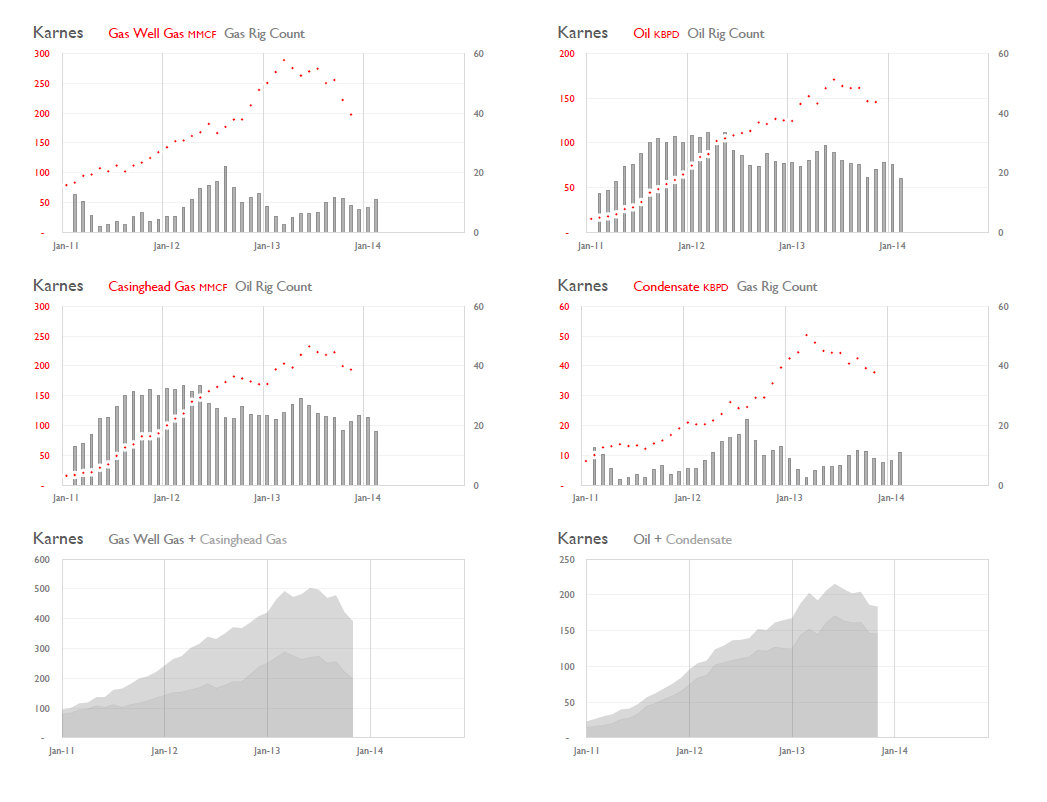The Eagle Ford Shale is a potent component of the outlook for domestic oil and gas production. Rapid development led to binding constraints in drilling and completion resources, and takeaway and processing capacity. With dry, wet, and oil windows, the production mix shifted. Rigs moved north (to oil) as gas prices went south. Rig classification is also ambiguous. Now it would seem that it is all about oil. With the gas rig count down near 30 and the oil count just shy of 200, the production mix should already be reflecting that shift. Look again at the rig count trend in the basin:
But gas production is still rising for the moment, and the EF counties are producing around 6 BCFD now. But just as audiences love an imperfect hero on the stage, the EF seems always to be mixing substantial oil in with the gas wells, and gas in with the oil. And in a play where rigs are so fast and productive, could gas production still grow meaningfully through oil wells?
To get an initial bearing on the question, a county like Karnes is useful to analyze. It is in the heart of the play, has over 1,000 EF well completions, covers both the dry gas, wet gas, and oil windows, and has strong drilling activity (around 35 rigs currently).
Here is the TX RRC map of the EF with Oil and Gas completions. Karnes is at the core, circled in yellow:
Texas classifies all producing wells as either Oil or Gas. When a well is classified 'Oil', the liquids are coded Oil and the associated gas is coded Casinghead Gas. When a well is classified 'Gas', the gas is coded Gas Well Gas, and the liquids are coded Condensate. With that in mind, here are current production statistics (though not complete for many months, as some production is reported late) for Karnes County, along with the average gas and oil rig counts by month (from Baker Hughes).
It is best not to set much significance by the apparent production declines in recent months. Those are temporary, with more production to be reported for those periods over time.
An examination of gas wells in Karnes county reveals that their production has been getting oilier over time, rising from about 40% condensate (by BTU equivalent), to over 50% in the past three years. But oil wells, of which there are many more, have produced a steady 19-20% Gas since early 2012. If oil wells in this area continued to generate a 4:1 oil:gas ratio, then oil wells would likely have gas reserves near 1 BCF per well. That would point to a gas rig equivalency in the range of 5-10 oil rigs = 1 gas rig. That's still a wide range, but it would suggest that 200 oil rigs are developing as much gas as 20-40 gas rigs. This cannot be extrapolated to the entire play without much more analysis, but it suggests that a 2 Million barrel a day oil output target could support 3BCFD in associated gas supply.



